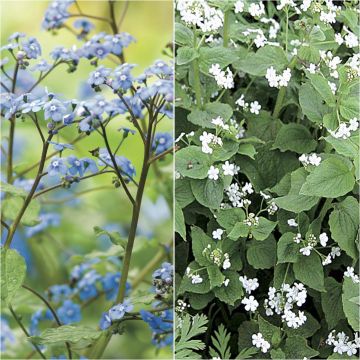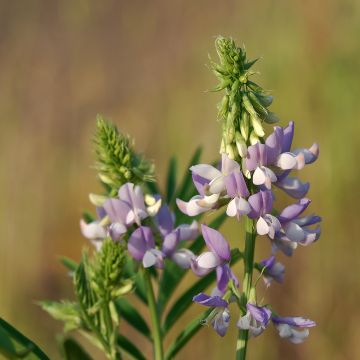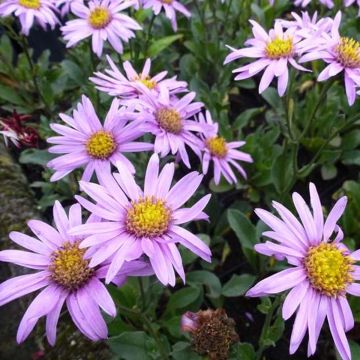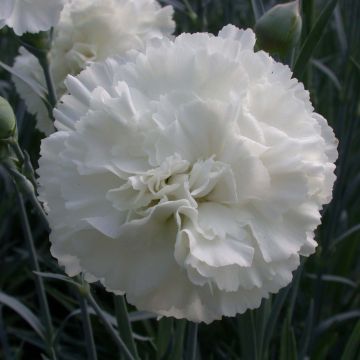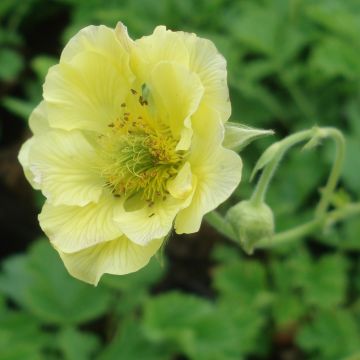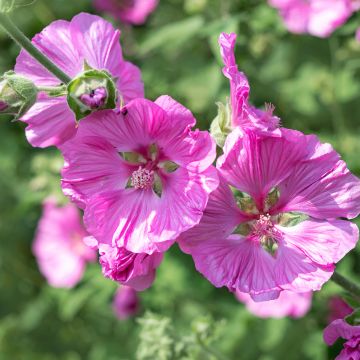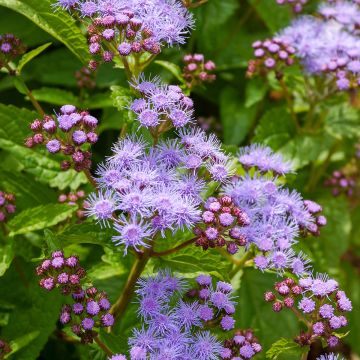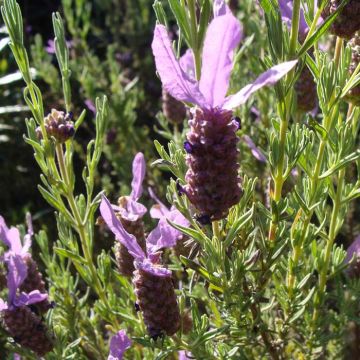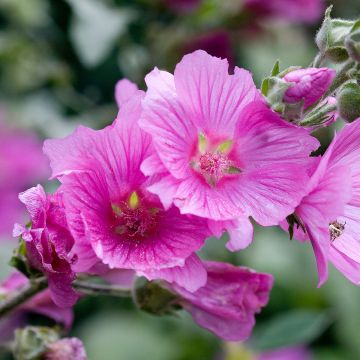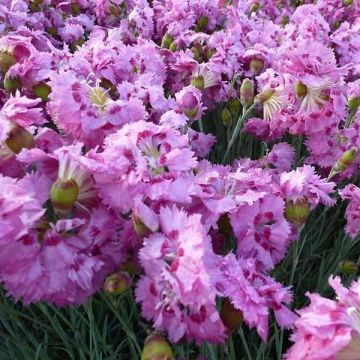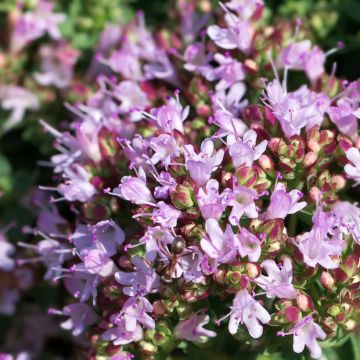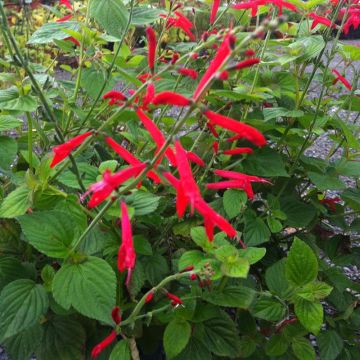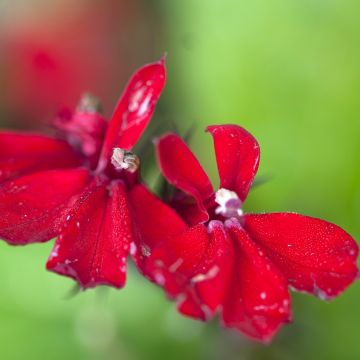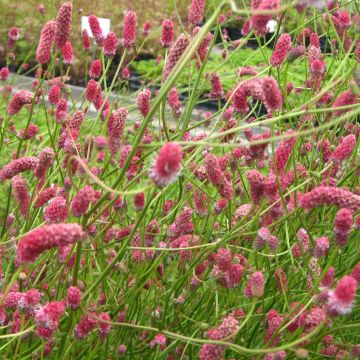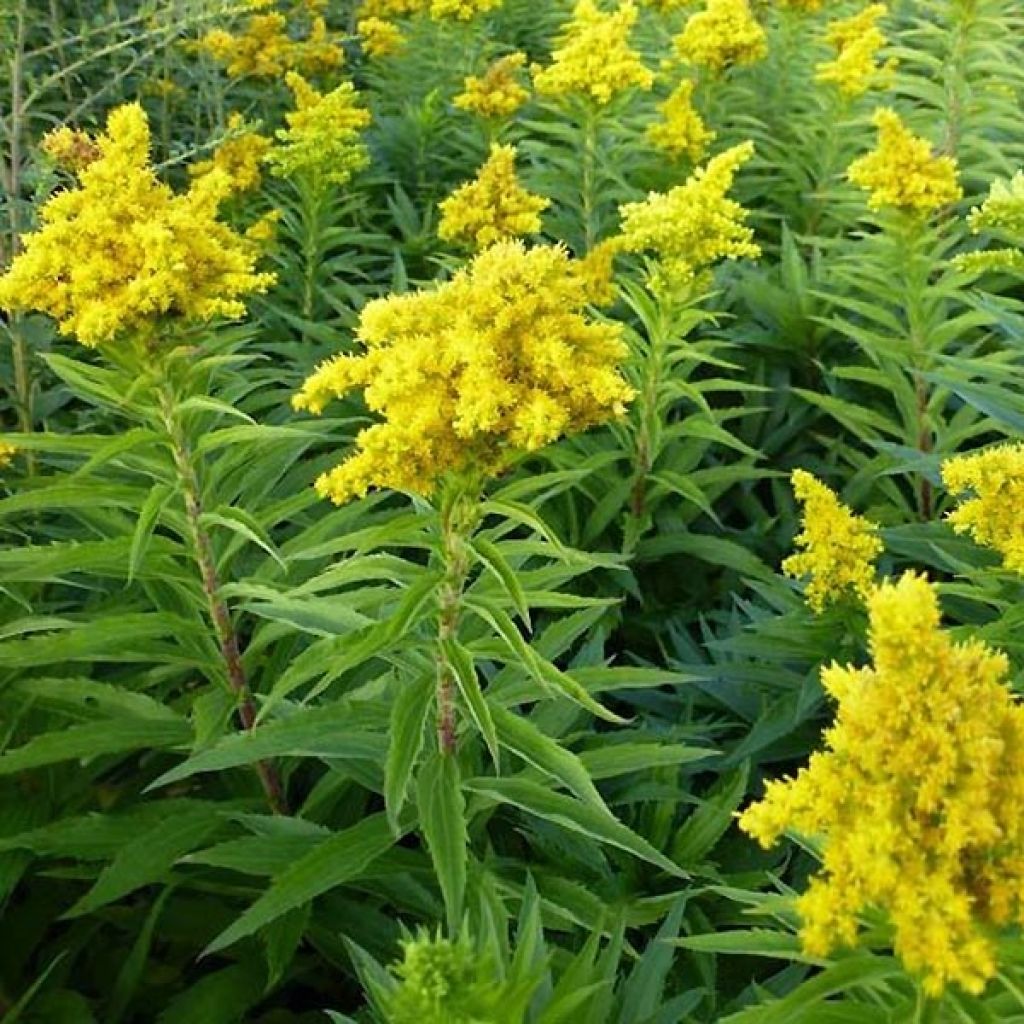

Solidago Spatgold
Solidago Spatgold
Solidago Spatgold
Goldenrod
This item cannot be shipped to the selected country
Delivery charge from €5.90
Delivery to Corse prohibited
More information
Schedule delivery date,
and select date in basket
This plant carries a 12 months recovery warranty
More information
We guarantee the quality of our plants for a full growing cycle, and will replace at our expense any plant that fails to recover under normal climatic and planting conditions.
From €5.90 for pickup delivery and €6.90 for home delivery
Express home delivery from €8.90.
Delivery to Corse prohibited: UE law prohibits the import of this plant from mainland France to Corse as part of the fight against Xylella fastidiosa. Please accept our sincere apologies.
More information
Does this plant fit my garden?
Set up your Plantfit profile →
Description
Solidago 'Spätgold', also known as Goldenrod or Golden Bouquet, is a particularly floriferous compact, non-invasive hybrid variety, suitable for all gardens. It produces fully golden-yellow pyramidal spikes in summer, with flowers and peduncles of the same tone, slightly arched, emerging from a very dense medium green foliage. A superb perennial, hardy, easy to grow in the sun, in ordinary sandy soil.
The Solidago Spatgold, also known as goldenrod, is a horticultural hybrid. This woody-based perennial belongs to the Asteraceae family and is a cousin of daisies and asters. The 'Spatgold' variety is distinguished mainly by a more compact bushy habit than the wild species from which it originates and its abundant flowering in short panicles. Unlike the wild species, it does not spread through suckers. This plant does not exceed 70 cm (28in) high when flowering, with a width of 50 cm (20in), and forms a dense, flexible clump of leafy stems. Flowering takes place from August to September, depending on the climate, with golden-yellow inflorescences. These are light panicles of tiny little daisy-like heads carried by yellow petioles in branched and feathery spikes. They appear at the end of sturdy stems, bearing opposite, elongated, rough, light green leaves with slightly toothed edges. This goldenrod disappears in late autumn and reappears in spring.
These perennial plants are loved for their late flowering and modern varieties of goldenrods have successfully replaced the old invasive and uninteresting ones. They are robust plants that only dislike excessive heat and drought, which can promote powdery mildew. Solidago 'Splatgold' can be planted alone or in groups of three, close to blue asters (Aster laevis Calliope) or mauve asters (Aster turbinellus), cosmos, Crambe cordifolia, and veronicas (Veronica incana, Veronica longifolia). Its flowers hold well when cut, and can also be dried before fully blooming to be included in dry arrangements.
Report an error about the product description
Solidago Spatgold in pictures
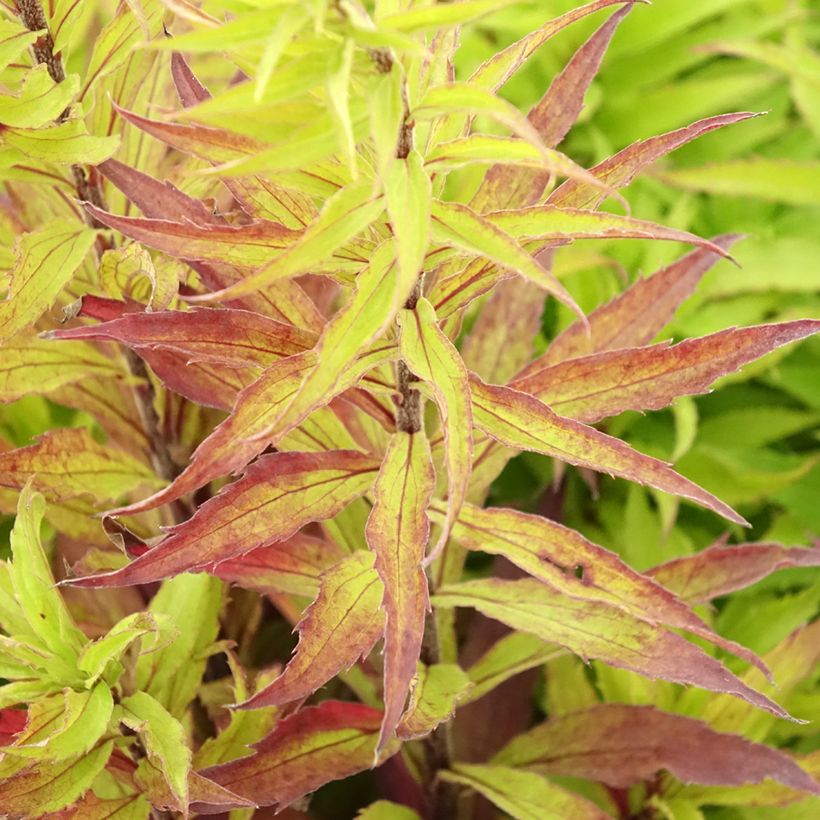

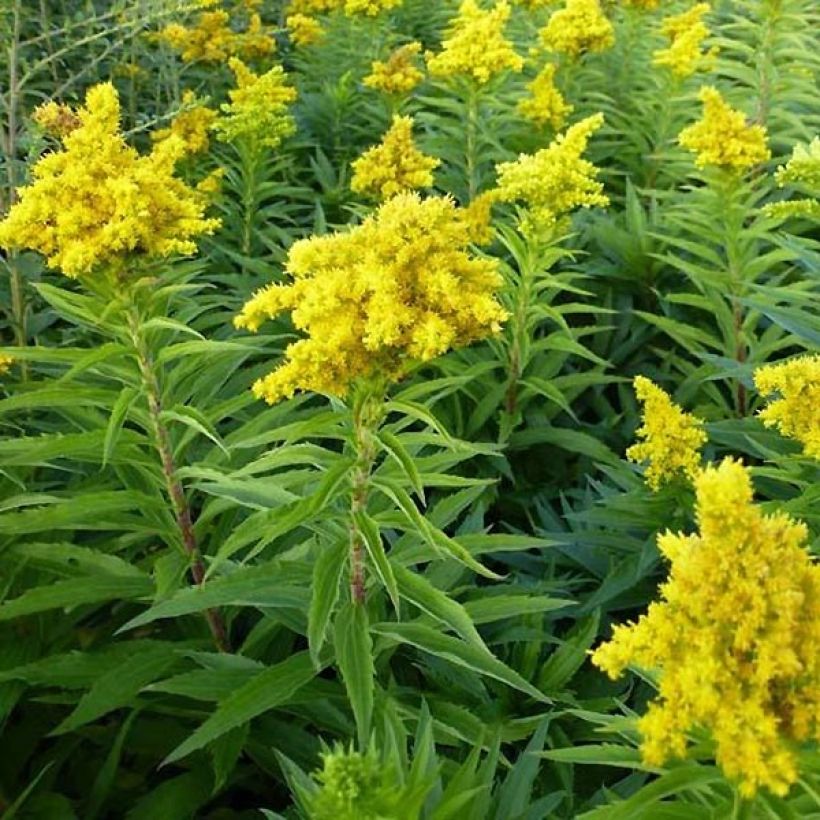

Flowering
Foliage
Plant habit
Botanical data
Solidago
Spatgold
Asteraceae
Goldenrod
Cultivar or hybrid
Other Perennials A to Z
Planting and care
Plant Solidago 'Splatgold' in full sun, in any well-prepared and well-drained soil, even poor, preferably sandy and low in limestone, sheltered from strong winds that could flatten the clumps. In hot regions, mulch the base in summer to maintain moisture, even though this variety tolerates occasional droughts very well. Avoid excessive heat and humidity, which promote powdery mildew.
Planting period
Intended location
Care
This item has not been reviewed yet - be the first to leave a review about it.
Summer flowering perennials
Haven't found what you were looking for?
Hardiness is the lowest winter temperature a plant can endure without suffering serious damage or even dying. However, hardiness is affected by location (a sheltered area, such as a patio), protection (winter cover) and soil type (hardiness is improved by well-drained soil).

Photo Sharing Terms & Conditions
In order to encourage gardeners to interact and share their experiences, Promesse de fleurs offers various media enabling content to be uploaded onto its Site - in particular via the ‘Photo sharing’ module.
The User agrees to refrain from:
- Posting any content that is illegal, prejudicial, insulting, racist, inciteful to hatred, revisionist, contrary to public decency, that infringes on privacy or on the privacy rights of third parties, in particular the publicity rights of persons and goods, intellectual property rights, or the right to privacy.
- Submitting content on behalf of a third party;
- Impersonate the identity of a third party and/or publish any personal information about a third party;
In general, the User undertakes to refrain from any unethical behaviour.
All Content (in particular text, comments, files, images, photos, videos, creative works, etc.), which may be subject to property or intellectual property rights, image or other private rights, shall remain the property of the User, subject to the limited rights granted by the terms of the licence granted by Promesse de fleurs as stated below. Users are at liberty to publish or not to publish such Content on the Site, notably via the ‘Photo Sharing’ facility, and accept that this Content shall be made public and freely accessible, notably on the Internet.
Users further acknowledge, undertake to have ,and guarantee that they hold all necessary rights and permissions to publish such material on the Site, in particular with regard to the legislation in force pertaining to any privacy, property, intellectual property, image, or contractual rights, or rights of any other nature. By publishing such Content on the Site, Users acknowledge accepting full liability as publishers of the Content within the meaning of the law, and grant Promesse de fleurs, free of charge, an inclusive, worldwide licence for the said Content for the entire duration of its publication, including all reproduction, representation, up/downloading, displaying, performing, transmission, and storage rights.
Users also grant permission for their name to be linked to the Content and accept that this link may not always be made available.
By engaging in posting material, Users consent to their Content becoming automatically accessible on the Internet, in particular on other sites and/or blogs and/or web pages of the Promesse de fleurs site, including in particular social pages and the Promesse de fleurs catalogue.
Users may secure the removal of entrusted content free of charge by issuing a simple request via our contact form.
The flowering period indicated on our website applies to countries and regions located in USDA zone 8 (France, the United Kingdom, Ireland, the Netherlands, etc.)
It will vary according to where you live:
- In zones 9 to 10 (Italy, Spain, Greece, etc.), flowering will occur about 2 to 4 weeks earlier.
- In zones 6 to 7 (Germany, Poland, Slovenia, and lower mountainous regions), flowering will be delayed by 2 to 3 weeks.
- In zone 5 (Central Europe, Scandinavia), blooming will be delayed by 3 to 5 weeks.
In temperate climates, pruning of spring-flowering shrubs (forsythia, spireas, etc.) should be done just after flowering.
Pruning of summer-flowering shrubs (Indian Lilac, Perovskia, etc.) can be done in winter or spring.
In cold regions as well as with frost-sensitive plants, avoid pruning too early when severe frosts may still occur.
The planting period indicated on our website applies to countries and regions located in USDA zone 8 (France, United Kingdom, Ireland, Netherlands).
It will vary according to where you live:
- In Mediterranean zones (Marseille, Madrid, Milan, etc.), autumn and winter are the best planting periods.
- In continental zones (Strasbourg, Munich, Vienna, etc.), delay planting by 2 to 3 weeks in spring and bring it forward by 2 to 4 weeks in autumn.
- In mountainous regions (the Alps, Pyrenees, Carpathians, etc.), it is best to plant in late spring (May-June) or late summer (August-September).
The harvesting period indicated on our website applies to countries and regions in USDA zone 8 (France, England, Ireland, the Netherlands).
In colder areas (Scandinavia, Poland, Austria...) fruit and vegetable harvests are likely to be delayed by 3-4 weeks.
In warmer areas (Italy, Spain, Greece, etc.), harvesting will probably take place earlier, depending on weather conditions.
The sowing periods indicated on our website apply to countries and regions within USDA Zone 8 (France, UK, Ireland, Netherlands).
In colder areas (Scandinavia, Poland, Austria...), delay any outdoor sowing by 3-4 weeks, or sow under glass.
In warmer climes (Italy, Spain, Greece, etc.), bring outdoor sowing forward by a few weeks.

































